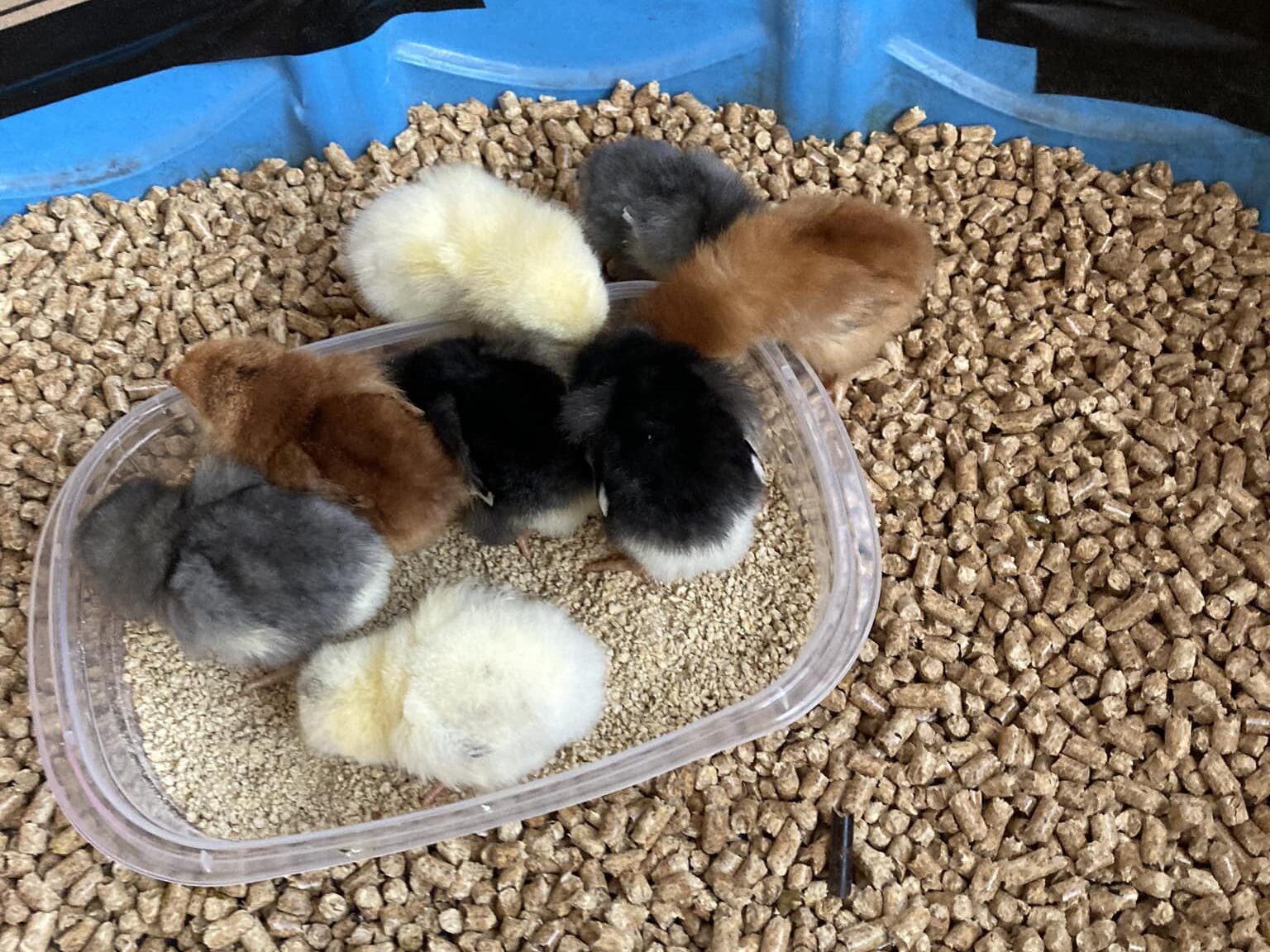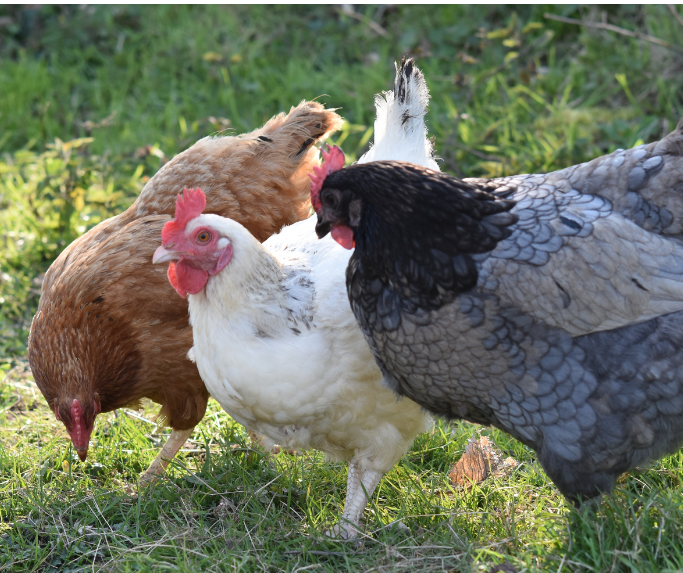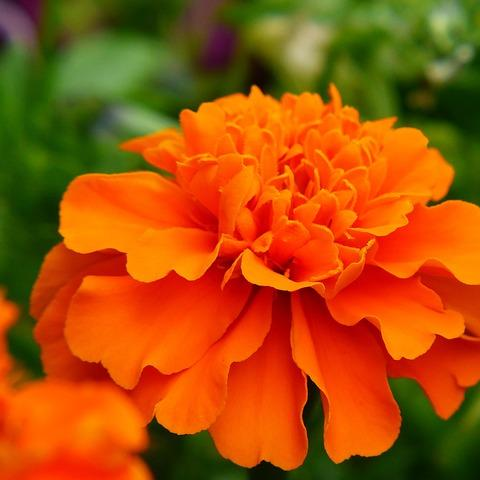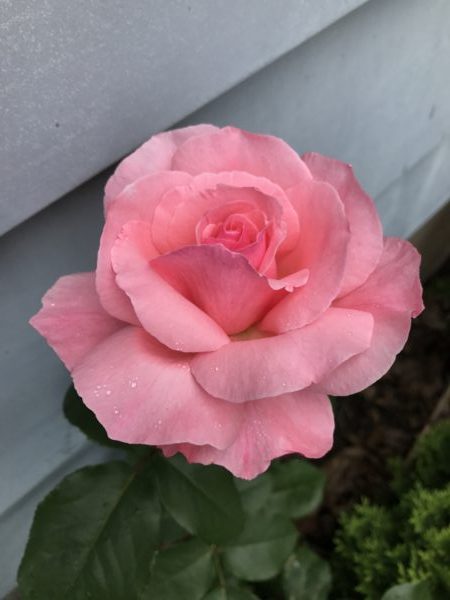Posts on Happily Homegrown contain affiliate links. When you make a purchase through an affiliate link, your price will be the same, but Happily Homegrown will receive a small commission. Thank you for your support!
Loss on the homestead is inevitable – either by harvesting, culling, illness, injury, or predators. While you know it will ultimately happen, it doesn’t make it hurt any less when it does.

I have wanted laying hens for a long time now. Two years ago we decided to start our own backyard flock. The plan was to start with 3-4 chickens and, every other year, add another 3-4 until we had 12.
But chicken math …
We heard stories about getting chicks and having half of them pass within a day or two for unknown reasons. There are stories about brooder heaters failing and the poor chicks freezing. Then, there were the cases of foxes or other critters wiping out the flock.
I had this idea that the chances of my chicks surviving would be slim. We were keeping them in an unheated outbuilding. It was late March, and overnight temperatures were still below freezing. There was no way they’d all make it.
But then I heard the other stories … the cases where you are told you’ll get hens and end up with roosters. I knew several people who purchased sexed birds and were told they were getting hens, and more than half were roosters! There was no way we would get all hens, was there?
I got more chicks than we planned so I’d be prepared when things went sideways.
So the chicken math meant that we were starting out with 8 chicks, two each of 4 breeds, so we could tell them apart. By May, we would know what we were up against and would cull the roosters. After the loss of the babies, we would have our 3-4 laying hens. That was the plan anyway.

Backyard Laying Hens
Things didn’t go as planned in the best ways possible. All eight chicks survived, and they were all female. Instead of a flock of 3-4, we had a solid flock of 8 laying hens.
I couldn’t wrap my head around having 8 hens, but we just kinda rolled with it. Not knowing better is sometimes a good thing.
Since we had four different breeds, they started laying at different times, but we were getting our first eggs by mid-July. It was so exciting to collect those first eggs; even two years in, that excitement hasn’t worn off.
With how well everything was going, I was always waiting for something to go wrong. For something to devastate our flock and wipe us out.
Protecting Our Hens from Wildlife
In the first season of having a backyard flock, we had a groundhog that visited the yard regularly. I was nervous that he would mess with the girls or dig under their coop, but he was more interested in the tomatoes.
We also had eagles, owls, and hawks nearby, but that was easily remedied by not allowing the girls to free-range unless we were outside. We built them an enclosed run and offered them a lot of protection from the predators.
During year two, the whole damn zoo ended up in our backyard, except for the groundhog, which was surprisingly absent (and hopefully stays away).
This year, we’ve had foxes, feral cats, a coyote (as far as we can tell by the tracks), raccoons, a skunk, and even a rat in the yard. I was not amused. At one point, I had eucalyptus drying out that we grew in the garden, and my husband commented that the next thing we will have is koalas. Instead, it was an opossum, the closest thing to a koala we have in the wild in Pennsylvania.
For the record, I live in the suburbs so this much wildlife on our half-acre property was enough to drive me nuts.
To protect them, we kept the hens in their run when we weren’t outside. We set timers for when to open and close the coop for the day so we wouldn’t have run-ins with nocturnal species (again). We did everything we could to make sure the girls were safe and happy. And it worked. We didn’t lose anyone to wildlife.

Loss is Inevitable
But loss is inevitable. No matter how much we try to prevent it, things sometimes happen for no reason. Or at least for no known reason.
About two weeks ago, my son went to lock up the chickens one night, and one of our Delaware hens, Dusty, was laying in the run. He said she was acting broody and was “loafed” as if she was sitting on eggs. He gently picked her up, put her in the coop, and locked everyone up for the night.
The next day, I checked on the girls and Dusty wasn’t acting right. I decided to bring her in the house and see if the extreme temperatures were causing her distress.
For the next 4 days, we would do everything in our power to show Dusty love and take care of her. There were no vets in our area who would see chickens, and several times, we were told to cull her from the flock. This broke my heart, and I didn’t have the gumption to off her. So, while consulting with several vets and other homesteaders, we continued to care for Dusty and hoped for the best trying a variety of home treatments.
Then, one night before I went to bed I checked on her and realized she was having a hard time waking up and was no longer eating or drinking. Having lost animals in the past, I knew she was actively dying and that this was what natural death looked like. It’s hard, but I wanted to care for her until the very end to honor her contribution to our family.
The following morning, I woke before the rest of the family and went to check on her and she had passed overnight as expected.
It’s OK to Be Sad
I sobbed so hard and felt all the feelings. I still do while writing this up. And it’s ok. It’s ok to be sad or upset or even angry when an animal passes. And the fact that that animal is livestock and not a pet doesn’t make a difference to me. It’s hard not to get attached, especially when caring for an animal that is in distress. A loss is still hard.
We still don’t know what caused Dusty’s demise. There is of course speculation and various theories. One vet we chatted with believes it was a congenital issue given her size compared to her breed (she was more than twice as large as the other hen of the same breed), and we don’t think she ever laid eggs since we never collected 8 eggs on a single day nor did we catch her in the laying box.
Our seven remaining hens are all healthy, and while we were providing hospice to Dusty, they started laying again. It is coldest days of the year, and we have resumed egg production and are now getting 2-4 eggs each day, which is entirely unexpected. It also helps to show me that life goes on and to focus on what we have and give the chickens we have the best life possible.

The Future of Our Flock
Over the holidays, Steve and I discussed adding a few chicks to our flock in 2025. My son was very upset after losing Dusty and said he doesn’t want to go through that again and asked us not to get any more chicks this year. While I understand where he is coming from, we’ve also discussed that this is nature and all part of the circle of life. We currently have 7 laying hens, and hopefully we will have 3-4 chicks added to the flock in spring.
https://www.facebook.com/profile.php?id=100057200481846#And this time I’m aware of the chicken math, so I’m only purchasing 3-4 chicks. I will show restraint even if they are incredibly cute when I visit the feed store.






 Three Rivers Challenge – 2025 Pantry Challenge
Three Rivers Challenge – 2025 Pantry Challenge
Leave a Reply